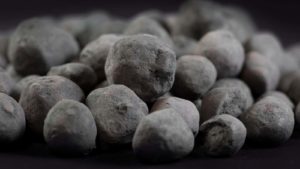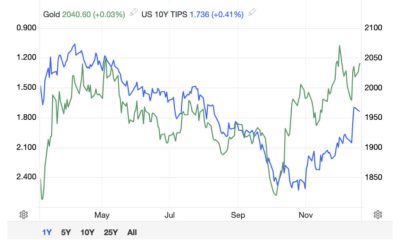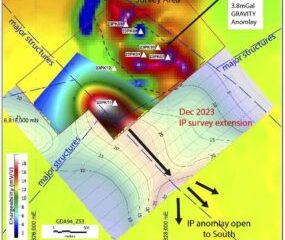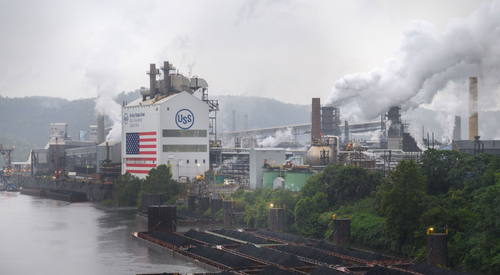Base Metals
Why ‘Costs are King’ in Iron Ore
WA Government issues olive branch to industry amid chaotic Aboriginal Heritage Act rollout, Fenix reveals plan to boss Mid-West iron … Read More
The…

- WA Government pledges ‘education-first’ approach to enforcing much-criticised Aboriginal Heritage Act
- Fenix snaps up Mt Gibson assets in bid to lower costs and boost scale of Mid West iron ore business
The mining industry has won a greater say in the implementation of new Aboriginal heritage laws in WA, described as a potential handbrake on exploration spending in the State.
The introduction of the new Aboriginal Heritage Act, which will begin its operation from Saturday, has quietly and quickly emerged as one of the hottest political topics in the State despite going largely under the radar for much of its five year long consultation period.
The act will remove the Section 18 exemption process that enabled Rio Tinto (ASX:RIO) to legally obliterate rock caves at Juukan Gorge containing 46,000 year old Aboriginal artefacts.
But it will also bring in new survey requirements and permitting costs in a cost recovery model criticised for being onerous and undercooked.
READ: Could WA’s new Aboriginal Heritage Act mean less drilling from ASX explorers?
While the Cook Labor Government appears unlikely to agree to a six month delay requested from the farming lobby and Lib-Nat State Opposition, it has made concessions in a bid to bring industry onside with the legislation’s imminent rollout.
It includes the formation of an implementation group including government, Traditional Owners and industry reps, along with an “education-first” approach to the enforcement of the laws over the first 12 months of its operation, suggesting large fines and penalties included in the legislation may not be wielded in the first instance.
The announcement has been welcomed by both the Association of Mining and Exploration Companies and Chamber of Minerals and Energy WA.
“The measures will smooth the transition to the new cultural heritage requirements and enable challenges to be addressed as they arise,” AMEC CEO Warren Pearce, who has called for the law’s introduction date on Saturday to remain in place, said.
“Western Australia’s existing cultural heritage legislation was simply not good enough and had to change.
“And while the new framework may be imperfect, the new process can be made to work through the good faith efforts of Traditional Owners, industry and government.
“The 12-month review or the regulations, previously committed to by government, will also ensure that there is a reasonable period to review the effectiveness of the new framework, and make adjustments where they are needed.”
Another four members have also been added to the Aboriginal Cultural Heritage Council, including new co-chair and former Federal Indigenous Affairs Minister Ken Wyatt.
CMEWA CEO Rebecca Tomkinson was supportive of the WA Government’s planned ‘education-first’ approach to compliance.
“We know that all stakeholders are keen to make this new system of heritage protection work, and this is a practical approach to achieving that,” she said.
“The implementation group will have a range of issues to work through and CME will continue to work with Government and other industry groups to iron out any complexities present across the broader framework.
“The implementation group will enable stakeholders to work through issues as they arise and CME will continue to work collaboratively with Government and other industry groups to iron out any complexities present across the broader framework.”
Fenix’s Mt Gibson deal gives logistics advantage to iron ore junior
Iron ore miners live and die by the quality of the resources.
But even more so, they do so by their control over infrastructure, the port, rail and road network that gets a commodity of such heft off our golden shores.
The biggest boys in the iron ore game, BHP (ASX:BHP) and Rio Tinto (ASX:RIO) have long benefitted from the work their subsidiaries did stretching back to the 1960s build and control their own infrastructure, and fought for years to prevent other companies sharing space.
Eventually Fortescue Metals Group (ASX:FMG) and Roy Hill broke out of the small end of the sector by developing their own port and rail assets.
BHP, Rio and FMG produce and ship iron ore at a cash cost of around US$20/t, at current prices delivering a margin before administrative costs and capex of about four times their cost base.
A smaller iron ore company can’t hope to be in the same ballpark, and many in the 1-3Mtpa range in WA are marginal players, likely to shutdown production if prices fall too hard, too fast.
But they can future proof against the notoriously volatile nature of iron ore prices, with one upstart Mid West miner doing just that today.
Sheds that could host the Bledisloe Cup
That has come in the form of a deal between Mt Gibson Iron (ASX:MGX) and Fenix Resources (ASX:FEX) which will see the 1.3Mtpa miner, owner of the Iron Ridge mine near Geraldton, acquire MGX’s Shine iron ore deposit, Extension Hill mine and port-rail infrastructure with a replacement value of $80m.
The price comes in at $10m cash along with 60 million shares in Fenix which will make MGX a 10% owner of the Mid-West miner’s stock, worth $16.2m as of 3pm AEST. MGX continues to operate the high grade Koolan Island mine off the Kimberley coast, a rare 65% Fe hematite ore deposit.
MGX will also receive 12.5m 5-year options exercisable at 25c per share — currently in the money — as well as 12.5m five year options exercisable at 30c, subject to a number of conditions in the transaction.
The Shine deposit contains 15Mt of iron ore at 58% Fe and has been on care and maintenance since MGX put it on ice after just a few months of production in 2021 amid a sudden drop in iron ore prices from all time highs of US$237/t to just US$87/t in six months.
That could well be developed by blending Shine’s lower grade ore with Fenix’s higher grade product, which will not attract the customer discounts Shine would as a standalone ore.
But the infrastructure traded is a key part of the deal.
It will deliver an immediate $5 per tonne cash cost saving, something that combined with the company’s acquisition of haulage partner Newhaul last year will see it lower costs to a position more likely to weather all parts of the iron ore price cycle, like a mini-major.
Fenix executive chairman John Welborn told investors on a webinar today the port infrastructure was a key part of the deal. While Fenix has four or five years at Iron Ridge’s 1.3Mtpa run rate, it could ramp up the production rate with an export capacity of up to 5Mtpa.
“I do think that people who see our expansion of Port infrastructure as a really significant part of today’s announcement are on the right track,” Welborn said.
“Because with the Fenix-Newhaul capacity that’s now fully 100% owned by Fenix, and significant capacity at the Geraldton Port in an environment where the port itself is looking to increase the throughput bulk tonnage is by more than 10Mt per year, we see a great opportunity to be a part of that.”
Fenix will also pick up a 138 person mining camp at Extension Hill, along with the sheds, the larger of which former Rugby Union pro Welborn quipped was big enough to fit two rugby fields and tall enough to “actually play a game of rugby in it”.
The rail access and sidings picked up as part of the deal could become significant enablers if Fenix expands to produce higher tonnages.
“We see those as an important, they’re not part of our immediate plans because we’re a road hauler, but when you get to really significant tonnages then rail becomes a very viable opportunity and when it is you need to have access,” Welborn said.
“So it’s great optionality for the future.”
Welborn said the additional storage capacity — up from 80,000t to 400,000t — enabled Fenix to also become a third party provider to other iron ore producers and other miners in the Mid West including picking up existing contracts from Mt Gibson.
Fenix has produced in excess of 3Mt from Iron Ridge since February 2021 at an average operating margin outside of hedging gains of $52/t.
Fenix Resources (ASX:FEX) and Mt Gibson Iron (ASX:MGX) share prices today:
The post Monsters of Rock: Here’s why ‘costs are king’ in iron ore appeared first on Stockhead.

White House Prepares For “Serious Scrutiny” Of Nippon-US Steel Deal
White House Prepares For "Serious Scrutiny" Of Nippon-US Steel Deal
National Economic Adviser Lael Brainard published a statement Thursday…
How to Apply for FAFSA
Students and families will see a redesigned FAFSA this year. Here’s how to fill it out.
Dolly Varden consolidates Big Bulk copper-gold porphyry by acquiring southern-portion claims – Richard Mills
2023.12.22
Dolly Varden Silver’s (TSXV:DV, OTCQX:DOLLF) stock price shot up 16 cents for a gain of 20% Thursday, after announcing a consolidation of…












